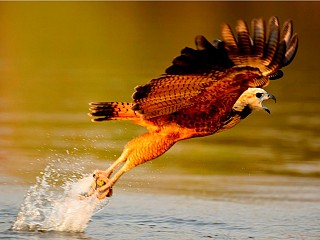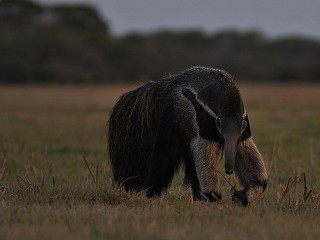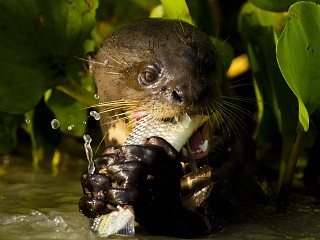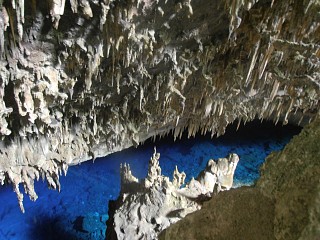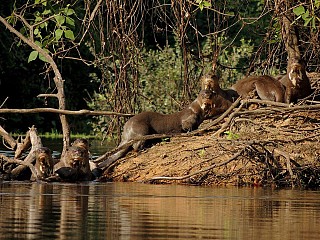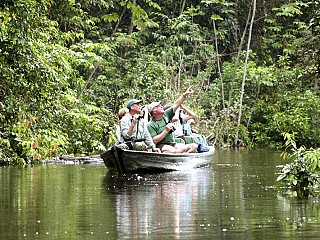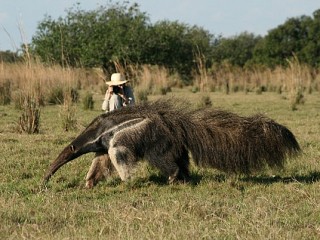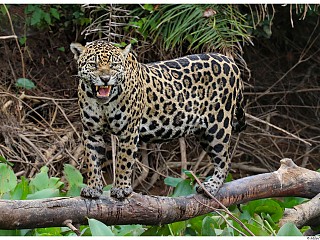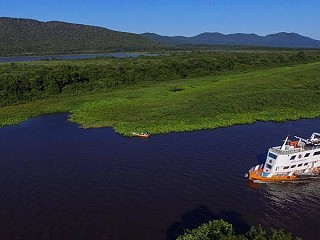Brazil offers the opportunity to take amazing pictures of wildlife. Wildlife photography offers different challenges from landscape photography as wildlife photography last on average (based on my experience) between 5 and 20 seconds.
It is very important for you to know your camera and how to adjust its settings. You should know things like what the minimum shutter speed is at which you can obtain a sharp image with your camera/lens combo, the added margins that the in-camera or in-lens stabilization gives you, how to quickly toggle between focus points or focus modes, how high you can push your camera’s ISO setting and still achieve acceptable results, among other things. Another important tip is to know the behavior of the animal you want to shoot. It pays off to be able to somewhat predict your subject’s behavior beforehand. Before coming to Brazil, research and learn a little about the types of animals you will find. Given, not every species is as predictable as the next, but there are patterns of behavior ingrained into every animal species. As with landscape photography, you will need to work with the lighting conditions. Stick to the golden rule of shooting at the hours of golden light. This means getting up early in the morning and being in the field before sunrise, and going out in the afternoon to make the most of the last hours of sunlight. The light over midday (mostly between 11h00 and 16h00) is generally harsh and robs images of that spunk that it needs, besides being very hot and uncomfortable for you. The golden hours will also provide a nicer temperature to be waiting for the correct moment to take the picture.
Many wildlife photographers get fixated on having the longest/biggest lens possible to get as close as possible to the animals and isolate them totally from their environment. The result is often an image that looks like it could be taken of a captive subject in a controlled location, with a perfect smooth background and no idea of the real environment in which it finds itself. Challenge yourself to shoot at a wider angle to give the viewer a better idea of where you took the image and where your subject has to carve out a living in the wild. This is applicable to any species you photograph – from the butterfly to the jaguar. Also by having a wider angle you could be able to capture several animals instead of one. Capturing the interaction between animals can also be a very nice picture. Your patience is another important factor, anything can happen at any time…but most things happen only rarely, or at the very least, they rarely coincide with the exact time that you are in that specific spot. This is why it is important to become patient and avoid missing the perfect moment to take the picture. Observing your subjects, getting to know their behavioral patterns, requires a great deal of patience.
Often the implications are that you need to return to the same spot for days before things start to happen. The last thing you need to know is that like with anything you want to get better at, you are going to have to get practicing your photographic techniques. Luckily with wildlife photography - or any type of photography - there is no shortage of opportunities or inspiration, so take lots of pictures and have fun!
Landscape Photography in Brazil
Brazil has some great spots for doing landscape photography. There is something about the nature and cities in this country that makes it an ideal place for doing photography tours and workshops. For doing landscape photography there are some things that you need to take into consideration to make your photos even better. Below we will describe some tips provided by expert landscape photographers.
Some of the equipment you will need:
- SLR Camera or SLR digital Camera
- Tripod
- Lens filters
The most important thing when taking landscape photos is maximizing the depth of field and ensure that as much of the scene is in focus. The simplest way to do this is by choosing a small aperture setting in your camera. The smaller your aperture, the greater the depth of field in your shots. On your trip to Brazil it is important to bring all of the equipment mentioned above, specially the tripod which will be essential for these types of photos.
When using a longer shutter speed, you may need to select a small aperture so you will need to find a way of ensuring your camera is completely still during the exposure. In fact, even if you are able to shoot at a fast shutter speed without moving the camera, the practice of using a tripod can be beneficial to you. You might also consider bringing a cable or wireless shutter release mechanism for extra camera stillness. Another important tip is to use points of interest where you can center your shot around. When you do this, you give those viewing the shot a way into the image as well as creating a sense of depth in your shot. Most landscapes will have either a dominant foreground or sky – unless you have one or the other your shot can end up being boring, so always try to get both elements into your shot. The percentage of each in your photo will be determined on which one is more interesting, the sky or the landscape.
When most people think about landscapes they think of calm, serene and passive environments – however landscapes are rarely completely still and to convey this movement in an image will add drama, mood and create a point of interest. Some examples of movement can be wind in trees, waves on a beach, water flowing over a waterfall, birds flying, moving clouds, etc. Capturing this movement generally means you need to look at a longer shutter speed (sometimes quite a few seconds). Of course this means more light hitting your sensor which will mean you need to either go for a small Aperture, use some sort of a filter or even shoot at the start or end of the day when there is less light. Some professional photographers only shoot pictures are around dawn and dusk – because that’s when the light is best and find that landscapes become alive. This time of the day are sometimes called ‘golden’ hours and are great for landscapes.
One advantage is the golden light from the sun at these times of the day, plus the angle and how it is affecting the scenery. The last tip that we have for you is to take a little more time with your shots – particularly in finding a more interesting point of view to shoot from. This might start with finding a different spot to shoot from than the scenic look out (wander down paths, look for new angles etc), could mean getting down onto the ground to shot from down low or finding a higher up vantage point to shoot from. It is a great excuse to go out and explore the area, just looking for the perfect and unique spot to take a picture.
